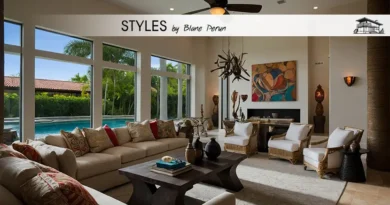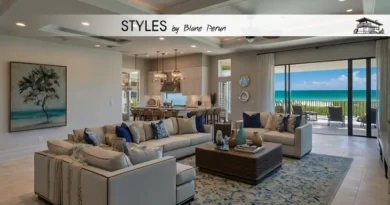Traditional Style
Embracing Elegance: The Timeless Appeal of Traditional Interior Design
When we talk about traditional interior design, we’re diving into a realm that’s rich with history, brimming with elegance, and characterized by a harmonious blend of comfort and sophistication. Traditional interior design is more than just a decorating style; it’s a narrative that weaves together the best of past and present, offering a sense of stability and warmth that many find incredibly inviting. This design philosophy pays homage to the European décor of the 18th and 19th centuries, incorporating classic art, antiques, and pieces with history into contemporary living spaces. It’s about creating environments that are not only beautiful but also timeless, spaces that feel collected and curated over time.

The Foundation of Traditional Aesthetics
The Role of Symmetry in Classic Spaces
At the heart of traditional interior design lies a deep respect for balance and proportion, elements that are fundamental to creating spaces that feel harmonious and serene. Symmetry plays a crucial role here, often seen in the meticulous arrangement of furniture and decor to create mirror-like reflections on either side of a room. This approach isn’t just about aesthetics; it’s rooted in the classical principles of design, where symmetry is synonymous with beauty and order.
The Palette: A Symphony of Colors
Traditional interiors often lean towards a palette that is both rich and understated, featuring a blend of deep, warm tones and lighter, neutral shades. This color scheme is designed to create an ambiance that is inviting and comforting, yet decidedly refined. The use of such colors is not arbitrary but is informed by historical preferences and the psychological effects of color on human perception, contributing to the overall sense of well-being and elegance in traditional spaces.
The Timelessness of Traditional Furniture
Crafting Elegance: The Art of Furniture Selection
Selecting the right furniture is pivotal in traditional interior design, where each piece is not just functional but also a work of art. Classic furniture pieces in this style often feature intricate woodwork, rich upholstery, and attention to detail that speaks volumes of craftsmanship. The selection process is akin to curating a collection, where each piece tells a story and contributes to the narrative of the space.
The Fusion of Comfort and Style
While traditional furniture is undeniably stylish, it does not compromise on comfort. Sofas and chairs in traditional settings are often plush, inviting one to sit back and relax, enveloped in luxury. This fusion of comfort and style is emblematic of traditional interior design, where aesthetics and functionality go hand in hand, ensuring that spaces are not only beautiful but also livable.
Decorative Elements and Accessories
The Art of Accessorizing
In traditional interior design, accessories play a key role in adding personality and depth to a room. From ornate mirrors and classic paintings to elegant vases and heirloom-quality textiles, these elements are carefully chosen to complement the overall design scheme. The art of accessorizing in traditional design is akin to putting the finishing touches on a masterpiece, where each element, no matter how small, contributes to the beauty of the whole.
Lighting: The Illumination of Elegance
Lighting in traditional interiors is about more than just functionality; it’s about setting the mood and enhancing the beauty of the space. Whether it’s through the soft glow of table lamps, the grandeur of a chandelier, or the strategic use of natural light, lighting plays a pivotal role in traditional design, bringing warmth and highlighting the intricate details that make these spaces so captivating.
Traditional interior design offers a sanctuary from the hustle and bustle of modern life, creating spaces that are not only visually stunning but also deeply comforting. It’s a style that honors the past while seamlessly integrating into the present, offering a timeless aesthetic that continues to enchant and inspire.

FAQs
What defines traditional interior design?
Traditional interior design is characterized by its classic European influences, embracing the elegance and decorum of the 18th and 19th centuries. It features symmetrical layouts, rich color palettes, and an emphasis on furniture and accessories that exude craftsmanship and history.
How can I incorporate traditional design elements into a modern home?
To blend traditional design elements into a modern home, start with classic furniture pieces that have timeless appeal. Incorporate rich, warm colors through textiles and wall colors, and use decorative accessories like mirrors, artwork, and lighting to add a touch of traditional elegance.
What is the importance of color in traditional interior design?
Color plays a significant role in traditional interior design, setting the mood and atmosphere of the space. Warm, rich tones alongside neutral shades create a balanced and inviting environment, reflecting the style’s emphasis on comfort and sophistication.
Can traditional and contemporary design styles be mixed?
Yes, traditional and contemporary design styles can be mixed to create a unique and personalized space. This approach, often referred to as transitional design, involves blending the timeless elegance of traditional elements with the clean lines and simplicity of contemporary design for a harmonious and updated look.
What are some key features of traditional furniture?
Key features of traditional furniture include intricate woodwork, ornate details, and luxurious upholstery. These pieces often reflect a high level of craftsmanship and attention to detail, embodying the classic and sophisticated essence of traditional interior design.





